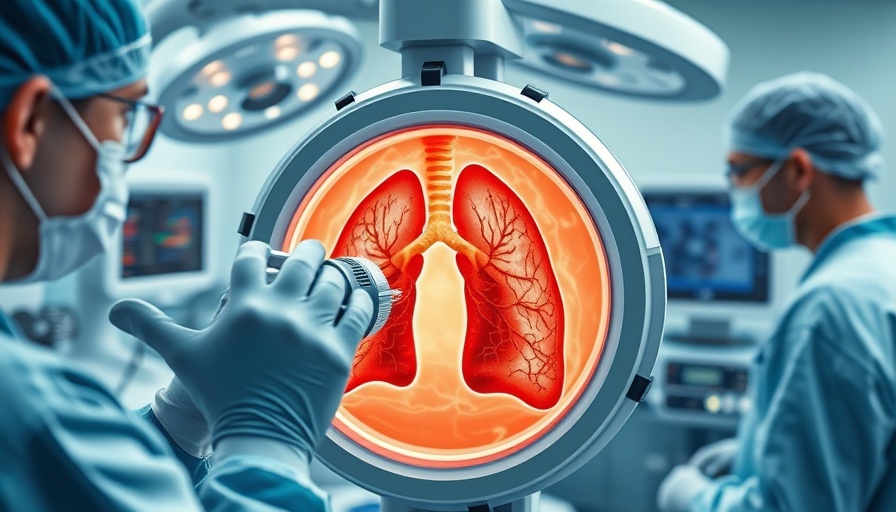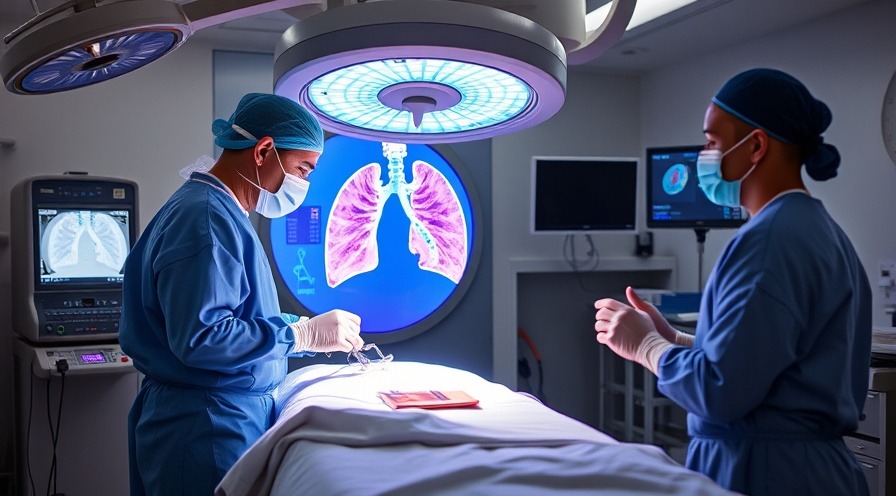
Revolutionizing Lung Cancer Treatment with Innovative Technology
The Prana system is set to transform the landscape of lung cancer treatment, particularly in the realm of minimally invasive surgeries. Targeted at improving the resection of nodular or interstitial lung abnormalities, this groundbreaking technology utilizes advanced imaging and precise tools to ensure effective treatment while minimizing physical trauma to patients.
In 'Breakthrough image-guided technology for cancer - 3D animation', the discussion dives into the revolutionary Prana system, exploring key insights that sparked deeper analysis on our end.
Understanding the Prana System: How It Works
At the heart of the Prana system lies a sophisticated array of devices working in sync under CT guidance. The process begins with placing an anchor wire through the chest wall, which is directed toward suspicious lung lesions. This ensures accurate localization, which is crucial for effective surgical intervention.
Once the lesion is targeted, a small incision is made to safely gain access to the pleural space, where further surgical actions take place. A port is advanced over the anchor wire, providing secure access to the area necessary for excision. With the trajectory reinforced by a wire stiffener, a coring device can then enter the lung, efficiently extracting tissue while minimizing bleeding via advanced bipolar radio frequency ablation.
The Advantages of Minimally Invasive Surgery
One of the primary benefits of the Prana system is its minimally invasive approach, which clearly stands out in the high-stakes world of oncology. Traditional lung cancer surgeries often require larger incisions and longer recovery times, whereas the Prana system focuses on reducing the physical footprint of surgical interventions.
This not only leads to better recovery outcomes for patients but also allows for reduced hospital stays and lower risks of postoperative complications. The precision of tissue removal—down to approximately 10mm wide and 2-3 cm long—also aids in preserving surrounding healthy tissues, a significant advantage that can impact patient quality of life positively.
The Future of Cancer Care: Evolving Technologies
The Prana system is part of a broader trend toward integrating advanced technologies in cancer care. As evidenced in the product roadmap, there’s vast potential for incorporating adjuvant therapies such as advanced robotics and ablation, which can significantly enhance therapeutic outcomes.
With the option for direct visualization through thoracoscopy, surgeons can inspect the excision site, ensuring accuracy and completeness throughout the surgical procedure. The capacity to apply adjunct measures—like blood patches and hemostatic agents—adds an extra layer of security in maintaining hemostasis and aerostasis during recovery.

Why Patients Should Care: The Importance of Innovative Treatments
This cutting-edge technology not only exemplifies advances in surgical techniques but also embodies hope for patients facing lung cancer diagnoses. As the landscape of cancer treatment continues to evolve, understanding and advocating for these advancements can empower patients when making treatment decisions.
Staying informed on how technologies like the Prana system can offer improved outcomes can be crucial. As patients and caregivers seeking wellness options, it's essential to explore these innovations and consider how they may enhance treatment pathways and recovery experiences.
Your Health Journey: Stay Informed and Proactive
As innovations like the Prana system unfold in the realm of cancer treatment, patients are encouraged to stay engaged and informed. Seeking out information on cutting-edge technologies can unlock pathways to better health outcomes through precision medicine. Arm yourself with knowledge, and consult with healthcare professionals about how these advancements could be included in your treatment plan.
 Add Row
Add Row  Add
Add 




Write A Comment